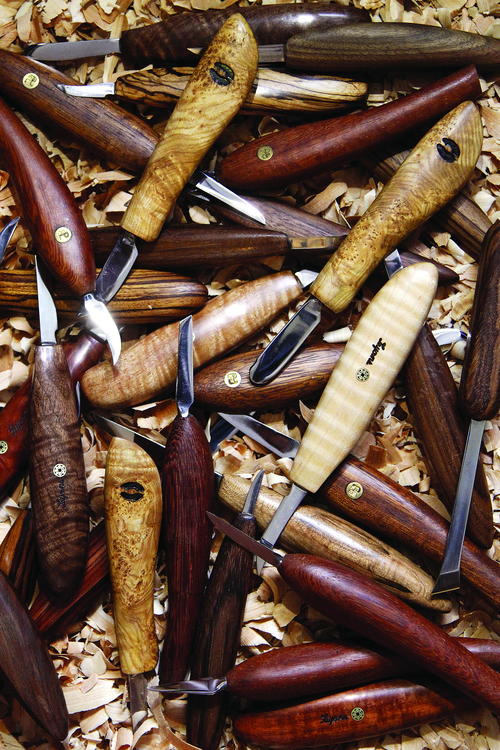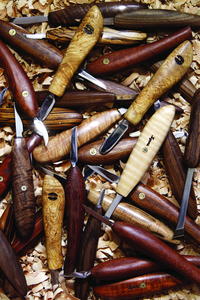The ABCs of Carving Knives - Part I

Many new wildfowl carvers start off using power tools. At some point in their carving careers, they may find their curiosity pulls them towards adding a carving knife or two to their tool arsenals.
This is pretty much how I started. At first, I carved cork blocks with a big, serrated bread knife and some rasps, and I worked over the heads with a Dremel. Later, I got my own Foredom, but I still used the old Dremel for the finer detail work. After taking a couple of classes, I found my interest in knives sparked by the custom carving knives one teacher kept hidden from his students. (He kept them hidden for good reason, as I soon found out).
I purchased my first knife from a vendor at a decoy show. As soon as I got home, I began whittling on a little teal head I had on a shelf . . . and I cut off the tip of my finger. That’s when I understood why my carving instructor didn’t want any of his students touching his knives. If I were going to continue with this knife carving venture, I needed some instruction on how to do things right.
I’ve picked up a few more knives since then, and learned a good bit on my own about how to use them, but the scar on the end of my finger makes me think that other carvers might want to learn a thing or two about how to get started with knife carving.
Read the rest of this article in Wildfowl Carving Magazine's Winter 2016 issue.
Read NextVintage Silhouette Shorebirds



